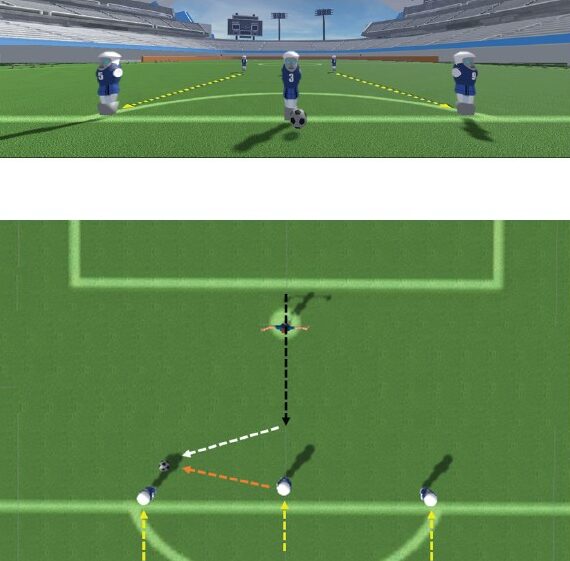First Sports-Specific Virtual Reality Study Shows Coordination Variances Based on Sports Specialization
Research By: Scott Bonnette
Post Date: January 15, 2023 | Publish Date: Jan. 15, 2023
Sports Medicine | Top Scientific Achievement


Sports specialization commonly entails intense training in a single sport year-round, excluding other sports. While this may help athletes achieve elite performance levels and accompanying rewards, there are potential drawbacks, including an increased risk of musculoskeletal overuse injuries. While exercise-based injury prevention programs can help reduce lower extremity injury risks, little is known about how sports specialization influences frequently performed sports movements, such as change-in-direction maneuvers.
“Young athletes are specializing in one sport in ever greater numbers at the expense of participating in multiple sports and generalized play; and despite the potential benefits, sport specialization may be detrimental to the health of young athletes,” says Scott Bonnette, PhD, primary author of the study.
The research team found that highly specialized athletes can respond more successfully and efficiently in virtual reality simulations of a soccer-specific cutting scenario—making a quick, sharp turn—than their nonspecialized peers. Overall, highly specialized athletes tended to exhibit significantly greater coordination and ability to intentionally break coordinated patterns to execute a cutting maneuver. However, this increased ability to respond with more adaptive movement patterns may place athletes at greater risk for injuries.
“The results of this study are important because it is one of the first to utilize motion capture and sport-specific virtual reality scenarios to reveal that specialized athletes exhibit both intra- and inter-limb coordination patterns that are different than unspecialized athletes,” says Bonnette.
To build on this foundational work, future studies are planned to establish the link between specialization and musculoskeletal injury risk; to evaluate the prophylactic effect of training programs that alter the movement patterns of specialized athletes; and to explore at what age specialization may negatively affect motor coordination.
View more discoveries from 50 research divisions and areas
Return to the 2023 Research Annual Report main features
| Original title: | Differences in Lower Extremity Coordination Patterns as a Function of Sports Specialization |
| Published in: | Journal of Motor Behavior |
| Publish date: | Jan. 15, 2023 |






